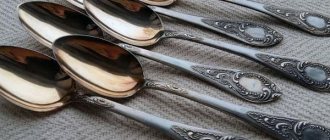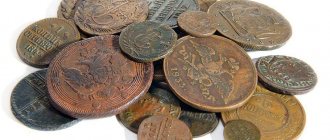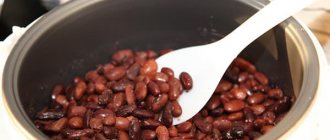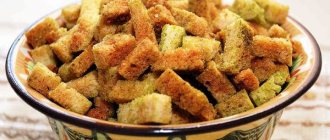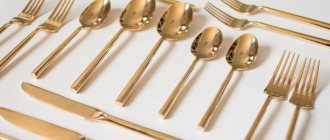Spoons, forks and knives polished to a shine are an important attribute of any feast. Cupronickel silver cutlery is produced as a budget alternative to silverware. In appearance, this type of table setting is almost as good as expensive decoration, but you need to learn how to properly care for them.
It is difficult to imagine the life of a modern person without cutlery.
What is cupronickel alloy
It is unknown where the tradition of giving newlyweds silverware in luxurious packaging came from, but it is always a pleasure to receive such a gift. The impoverished London aristocracy considered it a sign of good taste to inherit a set of cutlery made of cupronickel or more expensive metal. With proper care, they can be used for decades.
There is a large variety of forks, knives and other kitchen utensils.
In appearance, expensive table setting items are practically no different from more affordable ones. It is difficult to determine the material of manufacture at a quick glance, especially if it is gilded or rhodium-plated silver over iron. The difference in cost and percentage of metals, respectively, has its own care nuances.
They can have different shapes, purposes, and be made from different materials.
Cupronickel is a budget alternative to silver. The name comes from the German reading of the names of the French inventors of this innovation. These are Maillot and Chorier, the developers of the alloy, which was created in Lyon at the beginning of the 19th century.
Unusual cutlery is popular among all housewives.
Over time, the single-phase copper-nickel alloy was improved and the percentage composition changed. Experiments led to the addition of manganese and iron in small proportions. New alloys emerged such as monel, constantan and nickel silver. Silver-plated brass spoons and forks were also called cupronickel.
The alloy of nickel and copper was once considered a sign of wealth and respectability.
Today the composition includes up to 30% nickel, approximately 1% manganese and iron. It is a material resistant to deformation, corrosion and oxidation. Over time, the products develop a darkening characteristic of copper or brass. Because of this, sets of teaspoons and other items require preventative cleaning.
Advantages and disadvantages
Cupronickel is an alloy of several elements, so the main characteristics of the final product will be largely determined by the properties of the components. More nickel gives the metal high corrosion resistance, and if copper prevails in percentage, the color of the products changes.
Advantages and disadvantages
strength. In this parameter, nickel silver products are in many ways superior to silver;
safety (during operation no substances toxic to the human body are released);
attractive appearance; The dishes do not heat up, which is very convenient when using;
reasonable cost;
Spoons, knives, and forks do not become deformed; with proper care, they look elegant and solemn for a long time.
In the absence of proper and timely cleaning, a dark coating appears on the surface of spoons, forks, knives, cup holders, and trays. But this drawback can be easily corrected by using soda, ordinary chalk or ammonia for cleaning.
Properties of cupronickel cutlery
Utensils made of “white copper” were known back in the 3rd century BC. – they tried to melt copper with the addition of nickel. Over time, this technology was lost. Bowls and forks turned black in a humid environment, losing their aesthetic and practical value as table decorations at royal feasts. Imitation of silver and gold was once punishable by execution.
Nowadays, devices made from this material are very popular.
Modern cutlery looks much better than antique ones and can be polished well. Their aesthetic value is determined by the oxidation-resistant metal. Gift sets feature classic and modern designs. Cupronickel melts, cuts, and mints excellently. You can solder, straighten bent teeth of forks, sharpen knives, restore any other device, unlike silver, which is more difficult to process.
Compared to silver, cupronickel is softer, which means it is easy to create openwork products from it.
Cupronickel spoons
The copper-nickel alloy from which cupronickel spoons are stamped looks quite decent and has a characteristic shine when properly polished. The hue of different gift sets can vary - from almost white to yellowish-copper, reminiscent of gilded brass.
For modern tableware, a changed composition of the metal is used: zinc is removed from it, and instead of it, iron acts as a complement to copper and nickel.
Note! Zinc, iron and manganese, which are part of the alloys, were once declared harmful to health due to the possibility of their oxides entering the body. Their percentage is negligible; zinc is not used today. Cupronickel silverware is usually served not only for a festive feast.
It is difficult to answer unequivocally whether such alloys have at least some negative effect on the body. Most likely, devices cleaned of dark deposits do not cause any noticeable harm, but they also do not have the property of disinfecting soda, which is typical for silver ions.
Cupronickel forks
Sets of silverware at an affordable price are, of course, quite affordable cupronickel. Forks with rhodium plated coating, which is resistant to oxidation processes, are most valued. Such items are absolutely harmless, therefore they are widely used in everyday practice.
Important! Forks coated with a layer of silver or gold of several microns cannot be treated with acids and cleaning agents that contain abrasive particles. An alloy that has lost its protective treatment will darken during use.
Cupronickel teaspoons
It’s nice to stir sugar in a cup of coffee or tea with a beautiful cupronickel or silver spoon. This is an excellent gift, even in a single copy, if you engrave it with monograms, in imitation of pre-revolutionary traditions. Today you can find sets of English spoons with dessert tongs.
Even 2-3 centuries ago, people were aware of the intricacies of personal hygiene. Merchants and landowners had their own utensils, including tea and coffee spoons. It was customary to place small cupronickel spoons in rosettes for honey and jam for tea with pancakes, which is still relevant today.
According to research by psychologists, regular use of cupronickel knives, forks, and spoons significantly reduces nervousness.
How to clean silver plated spoons?
To do this, use soda, tooth powder or ammonia. Suitable store-bought products for caring for silver items - gels, pastes, wipes:
- Hagerty Silver Bath,
- Town Talk Polish Cutlery,
- "Aladdin"
- Talisman,
- Starvax.
Do not use abrasives - the silver layer is very thin. From aggressive influence it will quickly be erased, exposing the nickel silver. But not all products suitable for silver are suitable for it. Read the label carefully!
What are the differences between cupronickel and silver?
Noble metal always has a mark, never oxidizes and retains its original appearance, although it is heavier than its analogues. If you run a lapis (pencil) over silver and cupronickel, a dark spot will appear on the latter. But the democratic material has low thermal conductivity, so cupronickel devices are very convenient to use.
After heat treatment of the metal, the cutlery is given additional strength. This significantly increases their service life.
They are suitable for all-round applications:
- for hot soups and broths;
- snacks straight from the grill;
- main courses and salads;
- stirring coffee and tea.
Silverware is certainly more expensive, but it conducts heat better. The composition of the metal and its commercial name are usually indicated on certificates - documents confirming compliance with the stated standards. Dishes inherited do not always meet the standards.
Using a certain amount of nickel, iron and copper allows you to create an alloy that is not susceptible to corrosion.
Employees and pawnshops periodically encounter counterfeit silver, even if they bear the mark of the master. Usually this is ordinary cupronickel coated with tin and silver of several microns (through electroplating).
The alloy contains microelements that are necessary for the body.
Special means
To service silver-plated items, the industry produces a large number of different chlorine-free liquids, as well as abrasive particles. The most popular cleaning products are:
- Cream "Sif";
- "Amethyst";
- Paste "Polymet".
Special liquids used to clean jewelry are also suitable for effective cleaning of cupronickel items. Using dishwashing detergent is not recommended.
"Sif"
"Polymet"
Proper care of cupronickel cutlery
Having familiarized yourself with all the nuances, you can safely buy quite practical serving items - individual ones with an engraving of the owner’s name, as well as in gift sets. One condition is that you only have to wash them with a soft sponge and warm soapy water, rinse them in cold water and periodically lightly polish them with a flannel.
Devices with blackening are a classic option.
Immersing the set in a hot soda solution overnight, covering the bottom of the bowl with food foil, will rid them of plaque and other contaminants. The alloy is also easy to clean with tooth powder. Sometimes you can wipe forks and spoons with a rag containing a vinegar solution, rinse and dry.
White copper cookware can be cleaned with regular baking soda.
To clean silverware and cupronickel products, you can also use Amethyst emulsion, Sif-gel or Polymet paste (instructions on the package). It is better to store them in a closed box and polyethylene, without access to humid air. Then all items will flawlessly serve more than one generation.
There are products designed specifically for cleaning cupronickel products.
Having made a choice in favor of cupronickel spoons and forks, you should refrain from using them when preparing hot food. Frequent contact with boiling water and acidic environments will eventually lead to the loss of the protective layer. The appliances will turn black and give a metallic taste. For a festive feast, this is a universal option if you properly care for the products.
Cupronickel silverware is perfect for both everyday use and for official and special occasions.
How to clean nickel silver spoons with gilding?
To update nickel silver devices with gold plating, there are special store-bought products. If the contamination is not severe, it is enough to treat it with a piece of suede.
I also know a simple trick:
- Soak a piece of wool in apple cider vinegar. Wipe off the gilding. Do not apply unnecessary force so that the spraying does not wear off (the layer is very thin).
- Treat the remaining areas with a viscose napkin.
Sometimes beer gives a good effect. You need to lower the gilded area into a glass of drink and hold it there for 30 minutes. After this, rinse under the tap and wipe dry.
